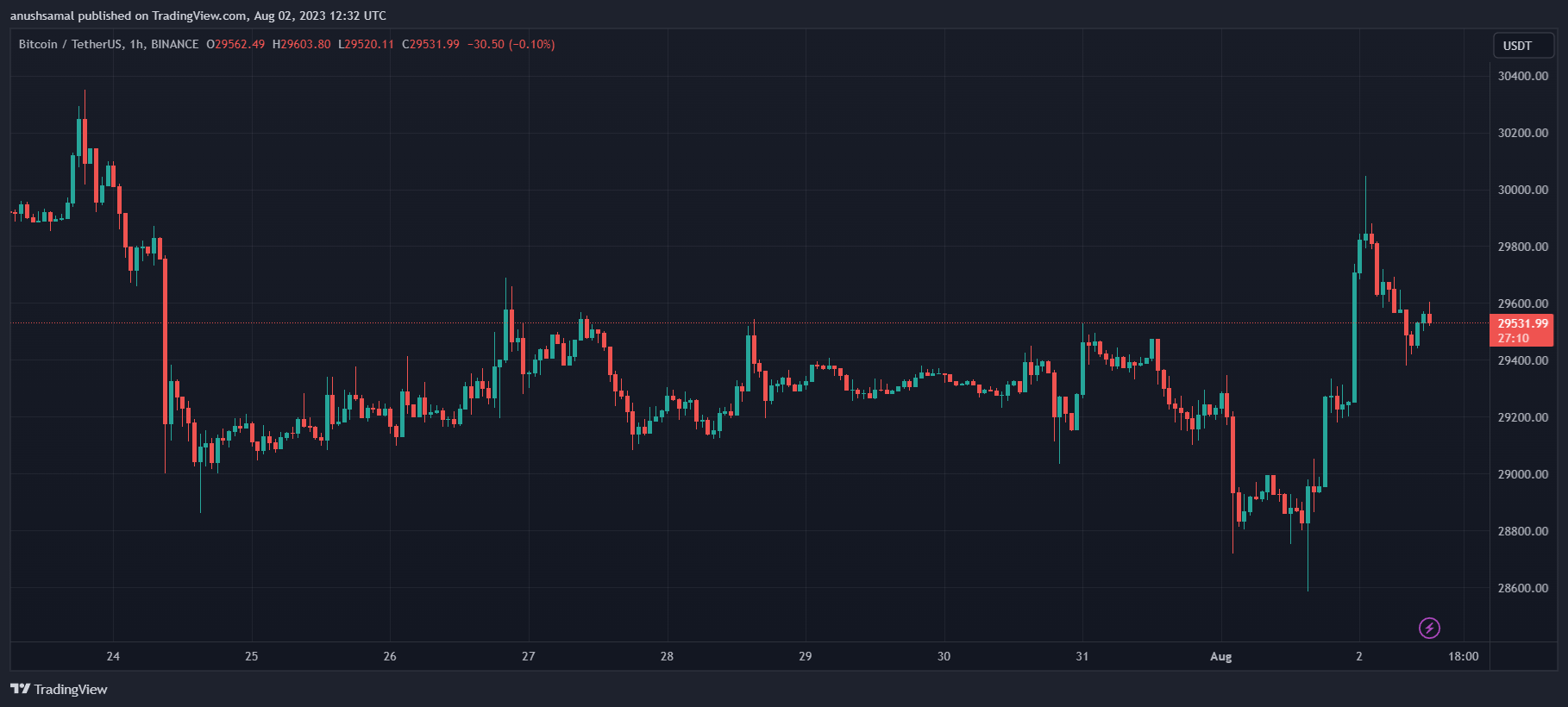Prominent accounting and consultancy firm, KPMG, has published a report delving into Bitcoin and its mining implications. The report focuses on investigating Bitcoin’s potential to align with the principles of environmentally friendly investing, commonly known as ESG (Environmental, Social, and Governance).
KPMG’s latest report categorizes Bitcoin (BTC) as a mature asset class, though it highlights the persistent misunderstandings despite its continued adoption.
The report’s primary objective is to thoroughly assess the technology’s actual environmental, social, and governance impacts and dispel prevailing misconceptions on these fronts.
Related Reading: Here’s What KPMG Said About Slowdown In Crypto Investments
In particular, they state that there is a variety of high-impact use cases offered by Bitcoin, which have a proven track record of delivering value to its users and society at large.
The Report stated:
Despite Bitcoin’s increased adoption, it continues to often be a misunderstood technology and asset class. At the same time, there’s a variety of impactful use cases that Bitcoin offers that have a track record of delivering value for their users and society at-large.
ESG represents a set of criteria utilized by investors and businesses to assess a company’s performance and sustainability practices. It plays a significant role in responsible investing, where ESG corporate reporting aids in evaluating risks and opportunities associated with the sustainability of business operations.
Bitcoin Mining: No Direct Emissions
The environmental impact of Bitcoin mining has sparked extensive discussions, primarily centered around its energy consumption during the mining process.
Bitcoin’s mining relies on a proof-of-work (PoW) consensus mechanism, where miners compete to solve a mathematical problem through computational efforts, leading to the addition of transactions to the blockchain.
This process involves repetitive hashing until a specific output is achieved. However, the PoW approach demands significant energy usage due to its computational nature, and this remains a significant contributor to the crypto asset’s overall energy consumption.
As stakeholders, including consumers, regulators, and investors, increasingly prioritize the pursuit of Net Zero emissions, the energy aspect of Bitcoin mining has come under the spotlight as a critical area of concern.
Understanding the energy consumption of Bitcoin mining is crucial. Like electric vehicles (EVs), BTC does not produce direct emissions (Scope 1 emissions) as its mining hardware (ASICs) operates on electricity.
However, certain scenarios may lead to Scope 1 emissions, such as repowering under-utilized generation assets or using waste gas, like natural gas flared during oil and gas production activities. Scope 1 emissions are direct greenhouse gas emissions originating from sources owned or controlled by a company or entity.
Bitcoin’s Emissions Significantly Lower Than Other Industries
For perspective, Bitcoin’s energy consumption is approximately 110 terawatt-hours per year, accounting for roughly 0.55% of global electricity usage. Surprisingly, this places Bitcoin’s impact on par with the energy required to run tumble dryers.
Such a finding is noteworthy, especially in light of the cryptocurrency’s longstanding criticism regarding its energy consumption.
The true concern lies elsewhere; the primary issue is not the use of energy, but rather the emissions resulting from the production of that energy, particularly from the burning of fossil fuels.
To provide a comprehensive comparison, it is important to assess the emissions associated with BTC’s operations against those of various industries and services.

Suggested Ways Of Reducing Carbon Footprint
The report highlights four methods to reduce the carbon footprint in Bitcoin mining. The first is renewable energy, where miners optimize operations and use underutilized renewable energy sources, like hydro, wind, or solar, reducing carbon footprint and promoting renewable energy expansion.
The next is grid balance is which miners participate in demand response programs, adjusting power usage to support grid stability and reduce emissions.
Coming third on the list is the act of heat recycling. In this case, miners repurpose mining rig heat for heating homes, buildings, and pools, cutting carbon footprint and utilizing wasted energy.
Last but not least is methane reduction. Doing this allows companies like Crusoe Energy convert flared gas into electricity for BTC mining, reducing methane emissions and creating valuable energy.
Related Reading: Big Four Firm KPMG Adds Bitcoin And Ethereum To Its Treasury
In conclusion, Bitcoin has shown considerable potential across an ESG framework. Its continuous evolution and innovation have led to diverse applications, ranging from stabilizing energy grids to reducing greenhouse gas emissions and providing sustainable heat to properties.
Some promising use cases include facilitating ease of payments, enabling cross-border transactions, providing access to electricity in rural Africa, and promoting financial inclusion for the approximately 1.4 billion people still unbanked.
As it progresses, BTC’s role in the renewable energy transition and its utility as a financial tool in various socio-economic contexts will become even more prominent.






